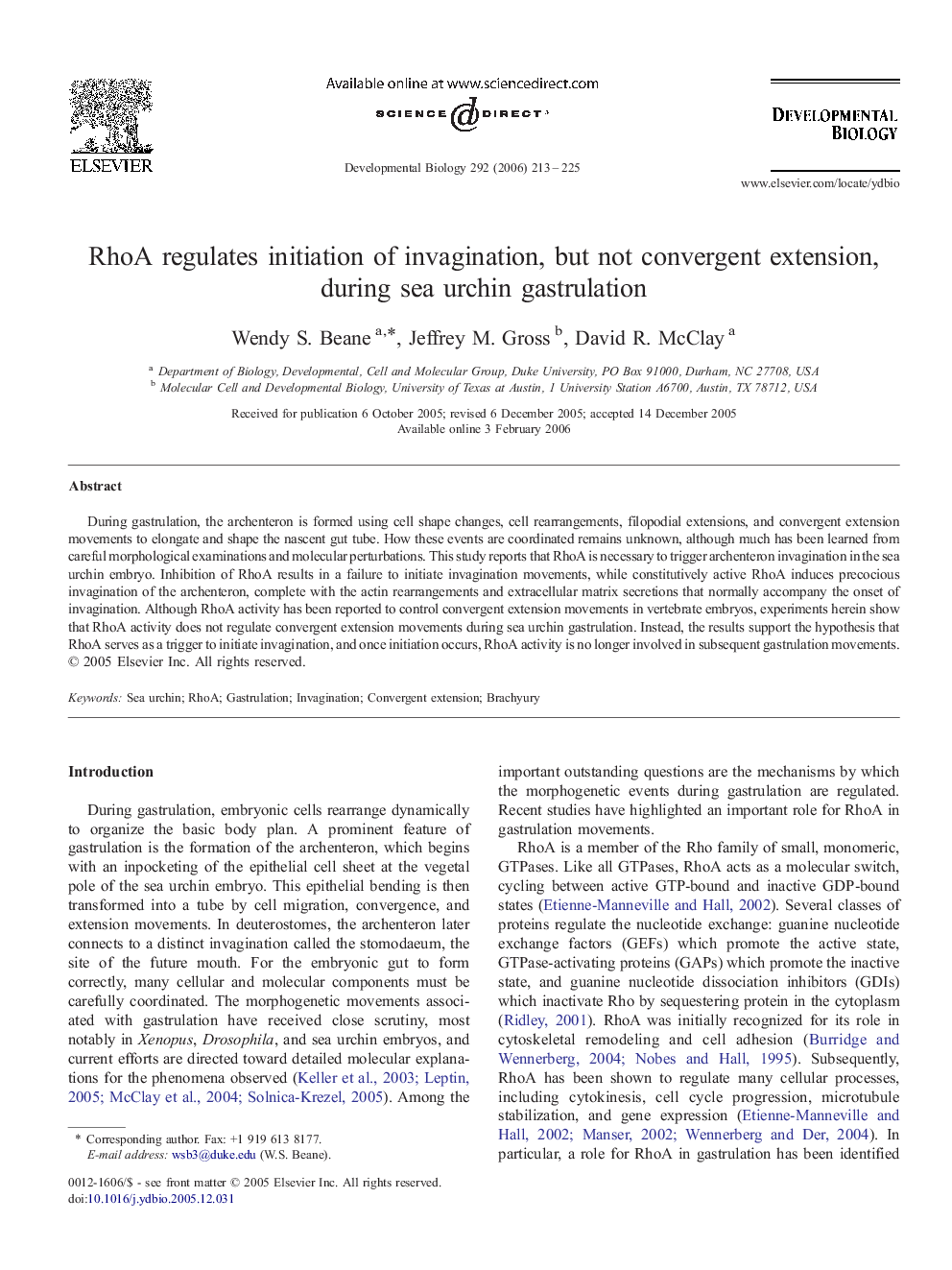| Article ID | Journal | Published Year | Pages | File Type |
|---|---|---|---|---|
| 2176180 | Developmental Biology | 2006 | 13 Pages |
During gastrulation, the archenteron is formed using cell shape changes, cell rearrangements, filopodial extensions, and convergent extension movements to elongate and shape the nascent gut tube. How these events are coordinated remains unknown, although much has been learned from careful morphological examinations and molecular perturbations. This study reports that RhoA is necessary to trigger archenteron invagination in the sea urchin embryo. Inhibition of RhoA results in a failure to initiate invagination movements, while constitutively active RhoA induces precocious invagination of the archenteron, complete with the actin rearrangements and extracellular matrix secretions that normally accompany the onset of invagination. Although RhoA activity has been reported to control convergent extension movements in vertebrate embryos, experiments herein show that RhoA activity does not regulate convergent extension movements during sea urchin gastrulation. Instead, the results support the hypothesis that RhoA serves as a trigger to initiate invagination, and once initiation occurs, RhoA activity is no longer involved in subsequent gastrulation movements.
